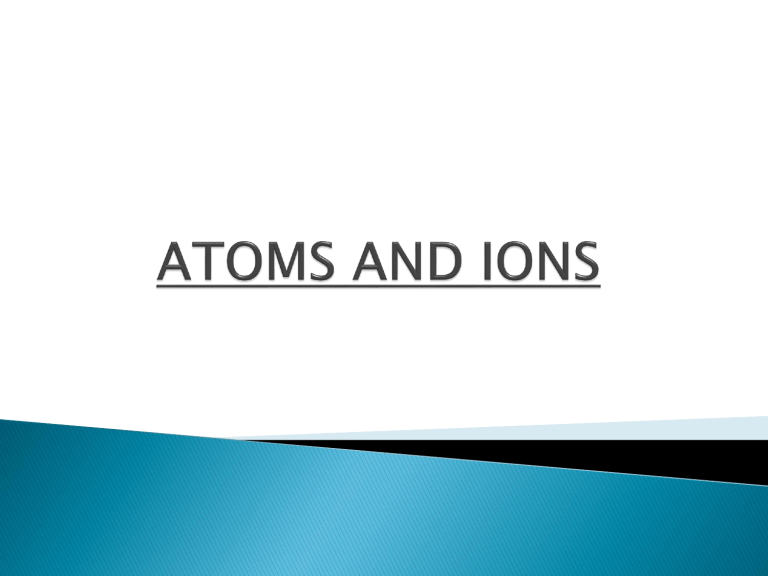Atoms-gr.7
advertisement

Atoms are the basic unit of chemistry. They consist of 3 smaller things: Protons - these are positively charged (+) Electrons - these are negatively charged (-) Neutrons - these have no charge These 3 smaller particles are arranged in a particular way. In the center is the Nucleus where you find the positive Protons and neutral Neutrons. In orbit around the nucleus are the Electrons. These are found in a series of orbits (depending on the atom) with differing numbers of electrons as seen below. It's the electrons in orbit around the nucleus that allow one atom to interact with other atoms so they can be linked together. Sometimes atoms gain or lose electrons. The atom then loses or gains a "negative" charge. These atoms are then called ions. Positive Ion - Occurs when an atom loses an electron (negative charge) it has more protons than electrons. Negative Ion - Occurs when an atom gains an electron (negative charge) it will have more electrons than protons. The following image shows Na losing an electron and Cl gaining an electron Thus the Na becomes Na+ The Cl becomes Cl- Molecules containin g more than two atoms are termed polyatomic molecul es, e.g., carbon dioxide (CO2) and water (H2O). Polymer molecules may contain many thousands of component atoms. A water molecule is made up of two hydrogen atoms and one oxygen atom.




